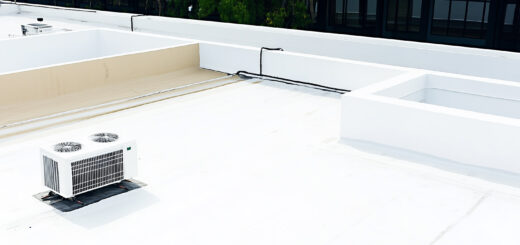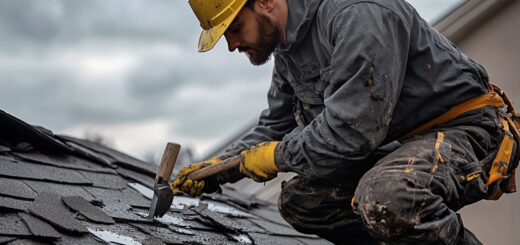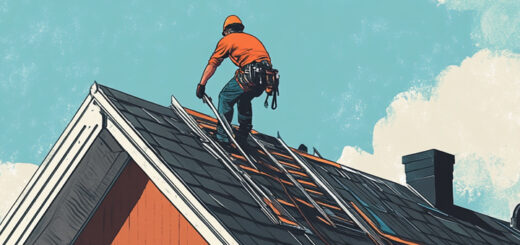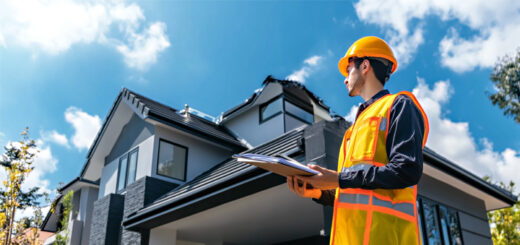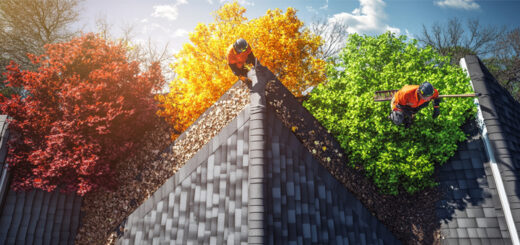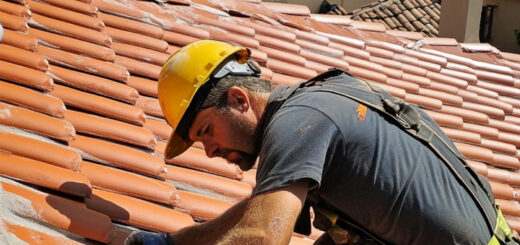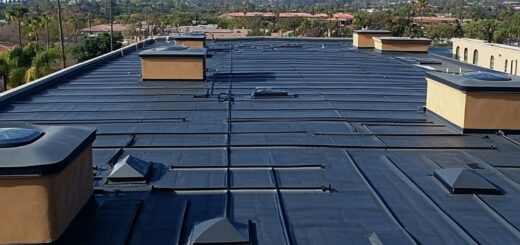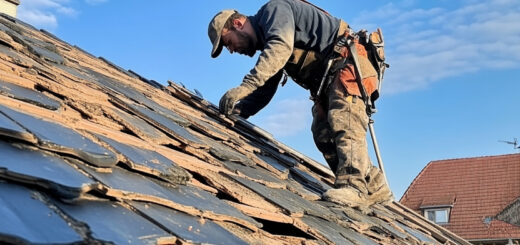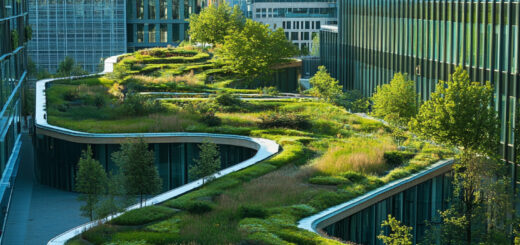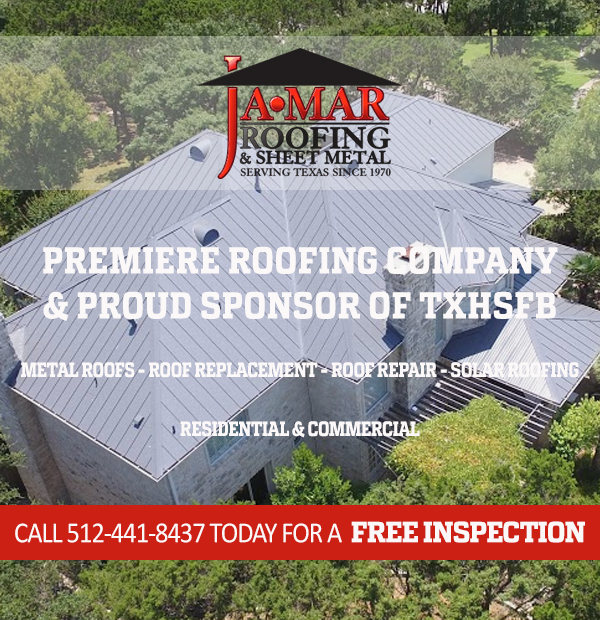Metal Roofs vs. Shingle Roofs: Which Is Better for Repairs?
When it comes to selecting the right roofing material for your home, understanding the differences between metal and shingle roofs is crucial. Both options have distinct characteristics that cater to various needs and preferences.
Metal roofs are known for their durability and longevity. Made from materials such as steel, aluminum, or copper, metal roofing offers excellent resistance against harsh weather conditions. One of the primary benefits of metal roofs is their lifespan; they can last 40 to 70 years with proper maintenance. Additionally, metal roofs are energy-efficient as they reflect solar radiant heat, which can reduce cooling costs in warmer climates.
On the other hand, shingle roofs remain a popular choice due to their affordability and ease of installation. Typically made from asphalt or fiberglass, shingle roofing provides a classic aesthetic that suits many architectural styles. Shingles are also available in a variety of colors and textures, allowing homeowners to customize their roof’s appearance easily. While they generally have a shorter lifespan than metal roofs—typically around 20 to 30 years—shingles offer good value for those looking for an economical roofing solution.
Ultimately, the decision between metal and shingle roofs depends on factors such as budget, climate considerations, and personal preference regarding appearance and maintenance requirements. By weighing these aspects carefully, homeowners can choose the most suitable roofing material for their specific needs.
The Cost of Repairs: Metal Roofs vs. Shingle Roofs
When evaluating roof repair costs, understanding the differences between metal roofs and shingle roofs is essential for homeowners looking to make informed decisions. Generally, metal roofs are known for their durability and longevity, often lasting 40 to 70 years with minimal maintenance. This resilience can result in lower long-term repair expenses compared to shingle roofs, which typically require more frequent repairs due to their susceptibility to weather-related damage.
The cost comparison between metal and shingle roofing reveals that while initial installation of a metal roof can be higher, the reduced need for repairs over time can make it a more affordable option in the long run. Shingle roofs, on the other hand, tend to have lower upfront costs but may incur higher cumulative repair costs due to issues such as cracking or missing shingles.
Affordable roof repairs depend on several factors including material choice and local labor rates. Homeowners should consider these aspects when planning for future maintenance expenses. By weighing the pros and cons of each roofing type, individuals can choose a solution that balances immediate budget constraints with long-term financial planning.
Durability and Longevity in Roofing Materials
When it comes to choosing roofing materials, durability and longevity are key factors that homeowners must consider. Among the various options available, metal roofs stand out for their impressive durability. Known for their ability to withstand harsh weather conditions, metal roofs can last between 40 to 70 years with proper maintenance. This makes them an excellent investment for those seeking long-lasting roofing options.
In contrast, shingle roofs, while popular due to their affordability and ease of installation, generally have a shorter lifespan. Typically, asphalt shingles last about 20 to 30 years depending on the quality of materials used and environmental factors. However, advancements in technology have led to the development of more resilient roof types within this category that offer enhanced longevity.
For homeowners looking for durable roofing solutions, it’s essential to weigh these differences carefully. Metal roofs may offer superior resilience and a longer lifespan compared to traditional shingle roofs but come at a higher upfront cost. Ultimately, selecting the right material depends on balancing budget considerations with long-term benefits such as reduced maintenance needs and increased property value provided by long-lasting roofing options.
Ease of Repair: Which Roofing Type is Simpler to Fix?
When it comes to roofing, the ease of repair is a significant factor to consider, especially for homeowners who want to minimize maintenance hassles. Two popular roofing types, metal roofs and shingle roofs, offer different levels of simplicity in repairs.
Metal roofs are known for their durability and long lifespan. However, when repairs are needed, they can be relatively straightforward. The ease of repairing a metal roof often involves replacing damaged panels or sections without disturbing the surrounding areas. This type of roof typically requires fewer repairs over time due to its resilience against harsh weather conditions.
On the other hand, fixing shingles on a roof might involve more frequent attention but can be simpler for minor repairs. Shingle roofs allow for easy replacement of individual shingles that may have been damaged by wind or fallen debris. Homeowners with basic DIY skills can often handle these simple roof repairs themselves with minimal tools.
In terms of maintenance requirements, both roofing types have their pros and cons. Metal roofs generally demand less routine upkeep compared to shingle roofs but may require specialized knowledge when issues arise. Shingles might need more regular inspections and occasional replacements but offer an accessible solution for those who prefer hands-on maintenance.
Ultimately, choosing between these roofing options depends on your priorities regarding repair ease and maintenance commitment. Whether you opt for the robust nature of metal or the accessibility of shingles, understanding each type’s repair dynamics will help you make an informed decision tailored to your needs.
Aesthetic Considerations and Impact on Home Value
When it comes to enhancing the aesthetic appeal of a home, roofing choices play a significant role. The choice between metal roofs and shingle roofs can greatly influence not only the visual impact but also the overall value of your property.
Metal roofs are renowned for their modern and sleek appearance, offering a unique aesthetic appeal that can set a home apart in any neighborhood. Available in various colors and styles, metal roofing can complement contemporary architectural designs while providing durability and energy efficiency. This combination of aesthetics and functionality often leads to an increase in home value, as potential buyers appreciate both the visual allure and long-term benefits.
On the other hand, shingle roofs provide a classic look that has been favored by homeowners for decades. Their versatility allows them to fit seamlessly with traditional home designs, enhancing curb appeal with their textured appearance. Shingles come in numerous colors and patterns, making it easy for homeowners to customize their roof’s look to match their personal style or neighborhood standards.
Both options have distinct visual impacts that cater to different tastes and architectural styles. While metal roofs might attract those looking for something bold and contemporary, shingle roofs continue to be a popular choice for those who prefer timeless elegance. Ultimately, choosing between these roofing materials involves considering how each will affect your home’s curb appeal and its market value down the line.
Sustainability and Environmental Impact of Roofing Choices
When it comes to selecting roofing materials, sustainability and environmental impact are increasingly important considerations for homeowners. Sustainable roofing options not only contribute to environmental conservation but also offer long-term benefits in terms of energy efficiency and durability.
One popular choice is eco-friendly metal roofs. Compared to traditional shingles, metal roofs are highly durable and often made from recycled materials, reducing their overall environmental footprint. They reflect solar radiant heat, which can decrease cooling costs by up to 25%, making them an energy-efficient option for homes in warmer climates.
On the other hand, conventional asphalt shingles are less sustainable due to their shorter lifespan and the petroleum-based materials used in their production. However, advancements in shingle technology have led to the development of more sustainable options that incorporate recycled content or feature cool-roof coatings that improve energy efficiency.
The environmental benefits of different roofs extend beyond just energy savings. For instance, green roofs—those covered with vegetation—can significantly reduce stormwater runoff, improve air quality, and provide natural insulation. While they may require a higher initial investment and structural considerations due to their weight, the ecological advantages they offer make them an attractive option for environmentally conscious homeowners.
Ultimately, choosing a sustainable roofing option involves weighing various factors such as local climate conditions, budget constraints, and personal preferences regarding aesthetics and functionality. By considering these aspects alongside the potential environmental benefits of different roofs, homeowners can make informed decisions that align with both their values and practical needs.
Deciding Between Metal and Shingle Roofs for Your Repair Needs
When it comes to deciding between metal and shingle roofs for your repair needs, it’s important to consider several factors that can influence your choice. Each material offers distinct advantages and potential drawbacks, making them suitable for different situations.
Metal roofs are renowned for their durability and longevity. They can withstand harsh weather conditions, such as heavy snow, high winds, and even hail, making them an excellent choice for areas prone to severe weather. Additionally, metal roofing is energy-efficient due to its reflective properties, which help reduce cooling costs in the summer months. However, the initial installation cost of metal roofing can be higher than that of shingles.
On the other hand, shingle roofs are a popular choice due to their affordability and ease of installation. They come in various styles and colors, allowing homeowners to achieve a desired aesthetic without breaking the bank. Shingles also provide good insulation properties but may require more frequent maintenance compared to metal roofs.
Ultimately, your decision should be based on budget considerations, climate conditions in your area, aesthetic preferences, and long-term maintenance plans. Consulting with a professional roofer can provide further insights tailored to your specific situation. By weighing these factors carefully, you can make an informed decision that ensures both functionality and value for years to come.
